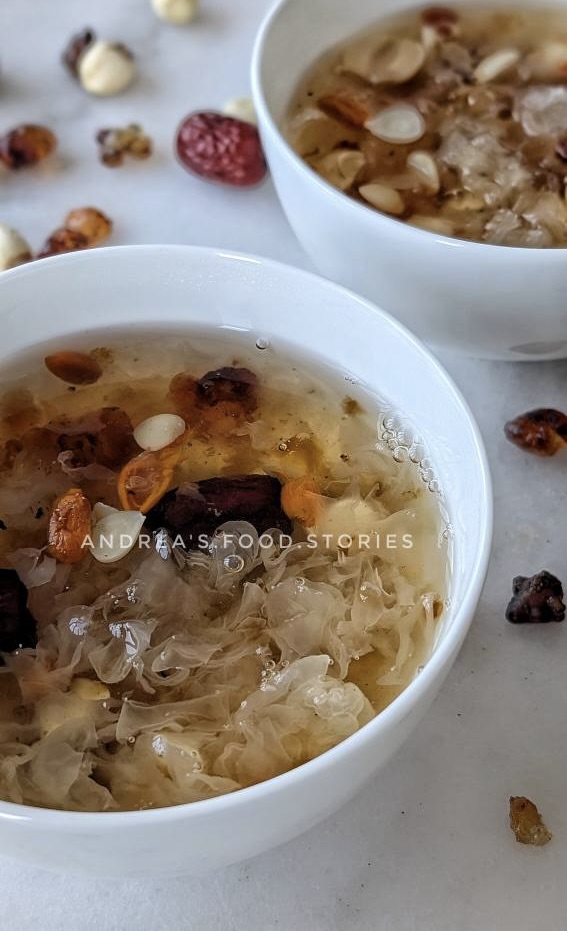
We’ve been battling dry coughs in our house lately—one of those lingering, annoying kinds that just won’t go away. The weather’s been all over the place, and it’s left our throats scratchy and dry. So today, I made a pot of snow fungus dessert soup.
What Is Snow Fungus Dessert Soup?
It’s a light, slightly sweet Chinese dessert soup (糖水) made with snow fungus (also called white fungus or Tremella), and a mix of nourishing ingredients simmered slowly until everything turns soft and almost silky. It’s considered a yin-nourishing dish in TCM, which means it helps moisten the body and soothe internal dryness—especially helpful when recovering from a cold, flu, or even just when the air is dry.
It’s something my mom used to make for us whenever we weren’t feeling our best. At the time, I didn’t know how nourishing it was—I just knew it was warm, lightly sweet, and a bit jelly-like. Now that I’m a mom myself, I finally understand why she made it so often. It’s become something I turn to as well—and now my kids get to enjoy the same comforting, nourishing soup.
In Traditional Chinese Medicine (TCM), this kind of soup is considered a yin-nourishing dish. Snow fungus is known for supporting lung health and keeping the skin hydrated (some people call it a natural beauty food). Lotus seeds and lily bulbs help calm the mind—great for days when everything feels a bit too much. And goji berries and red dates add a natural sweetness and are often used to support blood and overall energy (qi). It’s especially good for those dry coughs that hang around after a cold.
There are so many variations of this dessert soup—everyone seems to have their own way of making it depending on what they grew up with or what their body needs at the time. I usually add things like lotus seeds, goji berries, red dates, apricot kernels, lily bulbs, and peach resin because they all support the same goal: nourishing the lungs and skin and calming the body. It might sound like a long list, but once everything’s soaked and prepped, it all goes into one pot and simmers together until it’s soft and slightly syrupy.
I only add a little bit of rock sugar as the red dates and goji berries already give it a gentle sweetness. The texture is light and jelly-like from the snow fungus and peach resin, and it’s such a nice change from heavier desserts. My family enjoys it!
Ingredients I Used (and Why):
Here’s what went into my version:
- Snow Fungus (Tremella) – Moistens the lungs, nourishes yin, and is often called a “beauty food” because of its skin-hydrating benefits. It gets soft and gelatinous when cooked—almost like a natural jelly.
- Lotus Seeds – Neutral in nature, they help calm the mind, nourish the spleen, and support digestion. Great for kids and grown-ups alike.
- Goji Berries – Slightly sweet and often used to nourish the liver and kidneys, support vision, and boost energy. They’re also said to help with dry eyes and general fatigue.
- Red Dates (Jujubes) – A go-to in Chinese cooking and herbal soups. They help tonify qi (energy), nourish blood, and add a natural sweetness.
- Lily Bulbs – Gently moistening and calming. Used to support lung health, nourish yin qi and calm the heart and mind.
- Apricot Kernels – These are used in moderation, as recent studies have found they contain amygdalin—a compound that can be toxic in large amounts. They’re helpful for relieving cough and asthma and moisturizing the lungs. You usually see them in pairs: southern almonds (sweeter) and northern almonds (more bitter).
- Peach Resin – A jelly-like substance that comes from the bark of peach trees. In TCM, it’s used to nourish yin and improve skin and digestion. It looks fancy but is easy to prepare with a good soak and rinse.


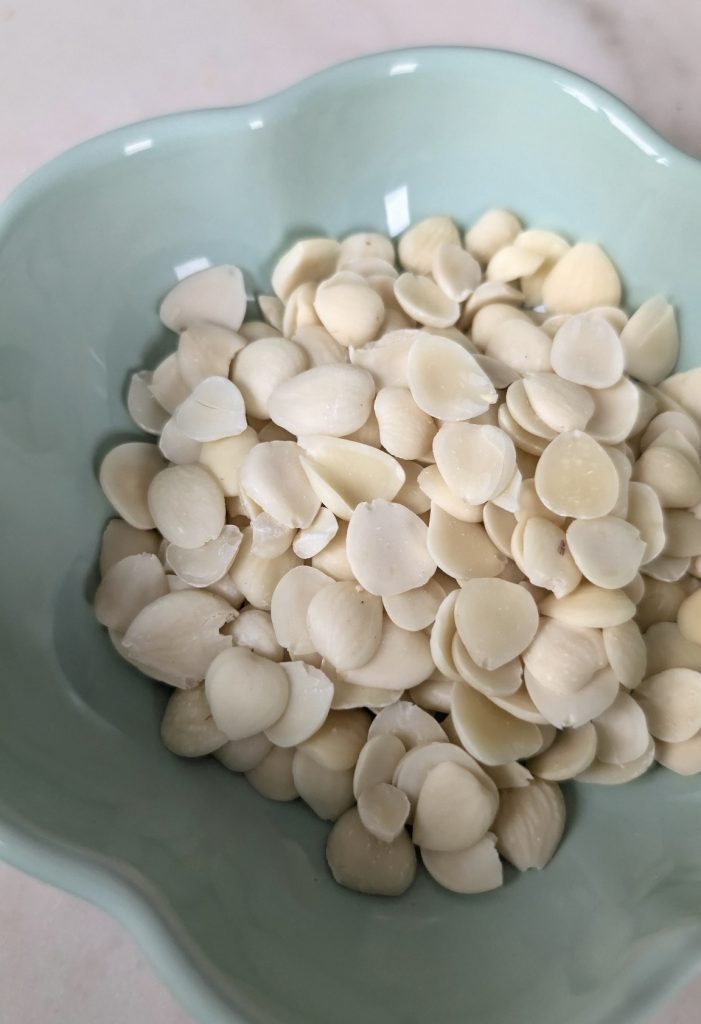
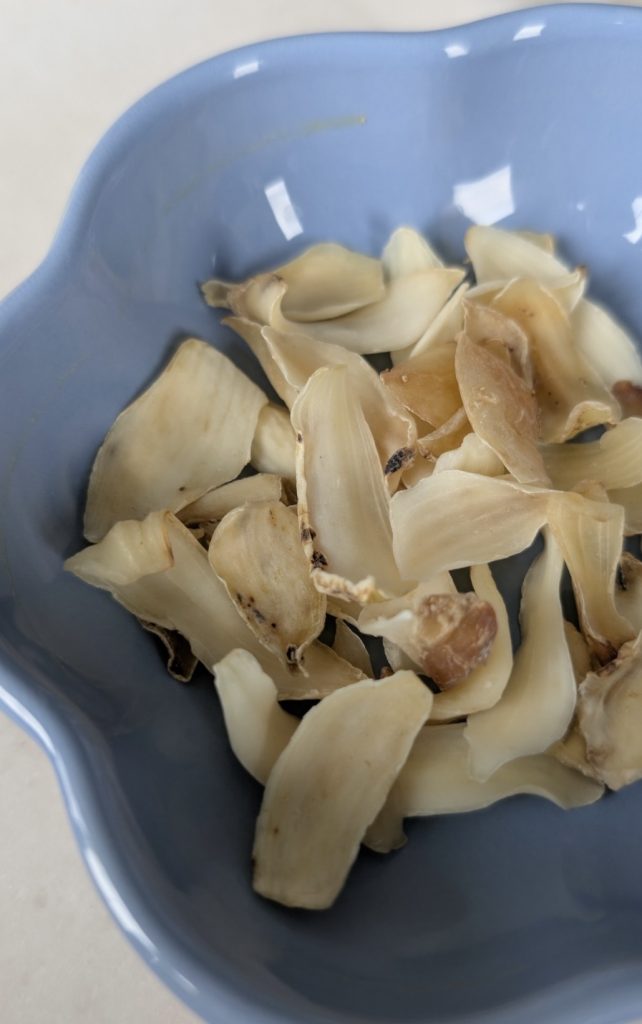
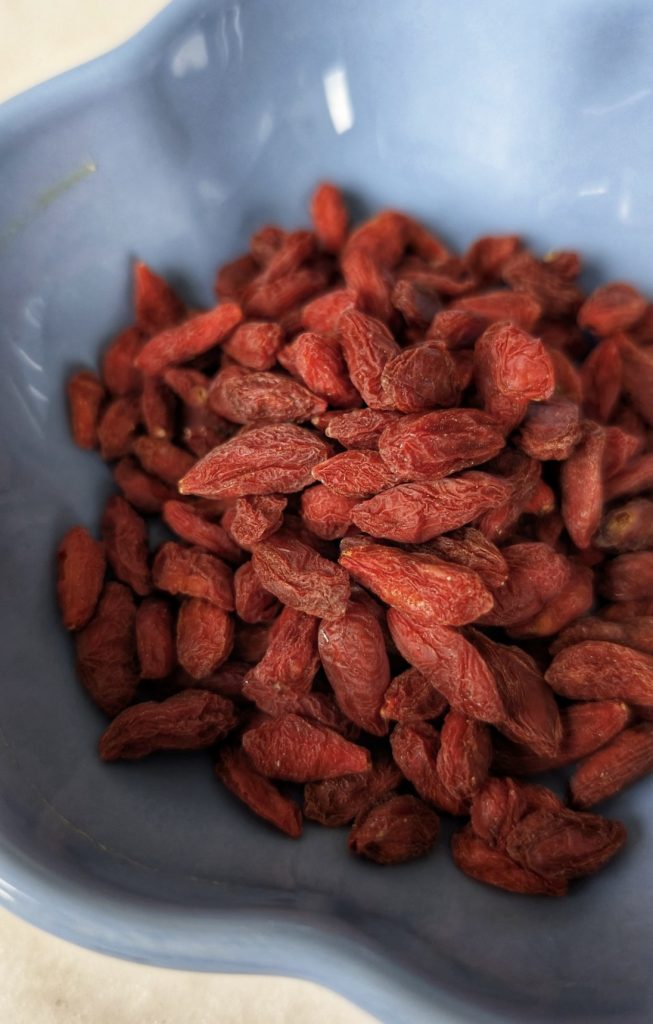
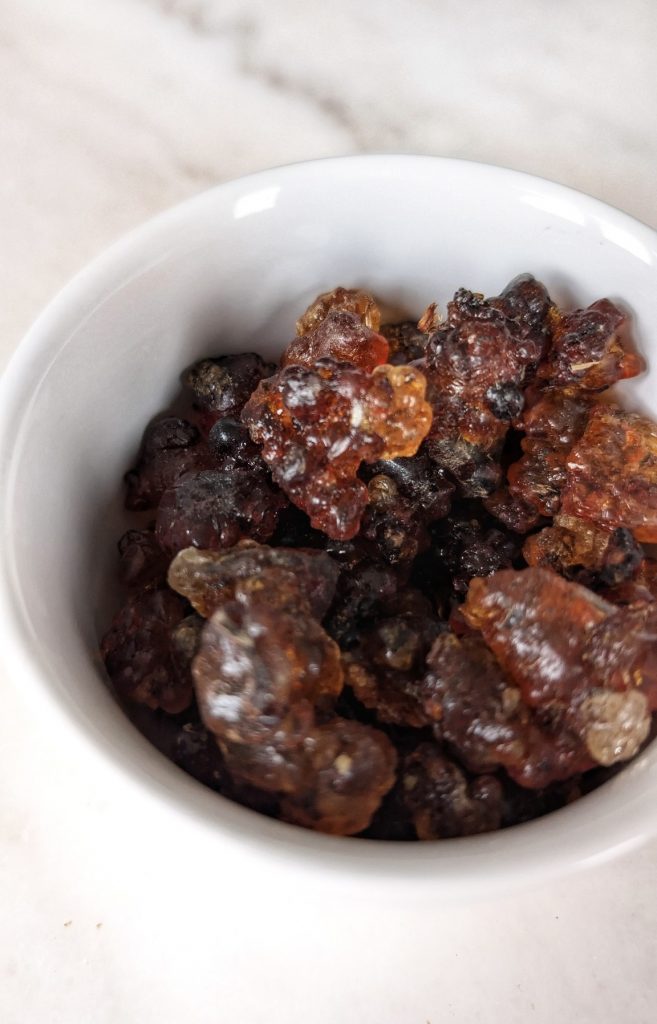
If you’ve never made it before, don’t be intimidated. Most of these ingredients are easy to find at Asian grocery stores or online. Just remember to soak the snow fungus and peach resin ahead of time (they expand a lot!), and go easy on the apricot kernels—they’re quite strong and only a small amount is needed.
As you know, over the years, I’ve learned a lot about TCM and I’ve come to appreciate how all these ingredients work together. Lily bulbs and lotus seeds are calming; red dates and goji berries are great for replenishing energy (qi); snow fungus and peach resin help moisten the lungs and skin. It’s the kind of dessert that feels more like a quiet remedy.
How I Made It
- Soak first: I soaked the snow fungus until it expanded (usually 1–2 hours), then trimmed the hard middle part and tore it into small pieces. The peach resin also needs a long soak and a good rinse to remove any impurities.
- Simmer low and slow: Everything went into a big pot with water—enough to cover it all and then some. I brought it to a boil, then lowered the heat and let it simmer gently for about 1.5 to 2 hours.
- Sweeten gently: I didn’t add rock sugar this time—just let the natural sweetness of the red dates and goji berries come through. But you can add a little if you like it sweeter.
Thermomix Shortcut
If you have a Thermomix, this part is super easy. After soaking and prepping the ingredients as usual, I just tossed everything into the bowl, added enough water to cover, and set it to:
60 minutes / 98°C / Reverse Stir
No need to babysit it. Once the time’s up, it’s ready to serve—everything comes out tender and infused with flavour. Perfect for busy days when you still want to make something nourishing.
Regardless which way you make it, the result is a light, soothing soup with jelly-like textures, mild sweetness, and a feeling of comfort that’s hard to describe. It’s not flashy or fancy—but it feels like home. And after a couple of bowls, I swear our throats felt less dry.
These are the kinds of recipes I might not have fully appreciated as a kid, but now, as a mom, I completely understand. I understand why my mom made this for us when we were sick, and why she always had these dried ingredients stashed in the pantry. It’s food as care. Food that heals slowly and quietly. I love that I can now make this for them the way my mom made it for us. It’s funny how these little traditions come back around.
If your house is also dealing with dry coughs or if you’re just looking for something comforting and nourishing, I definitely recommend giving this a try. You don’t have to know all the TCM theory behind it—just know that it’s gentle, supportive, and made with intention.